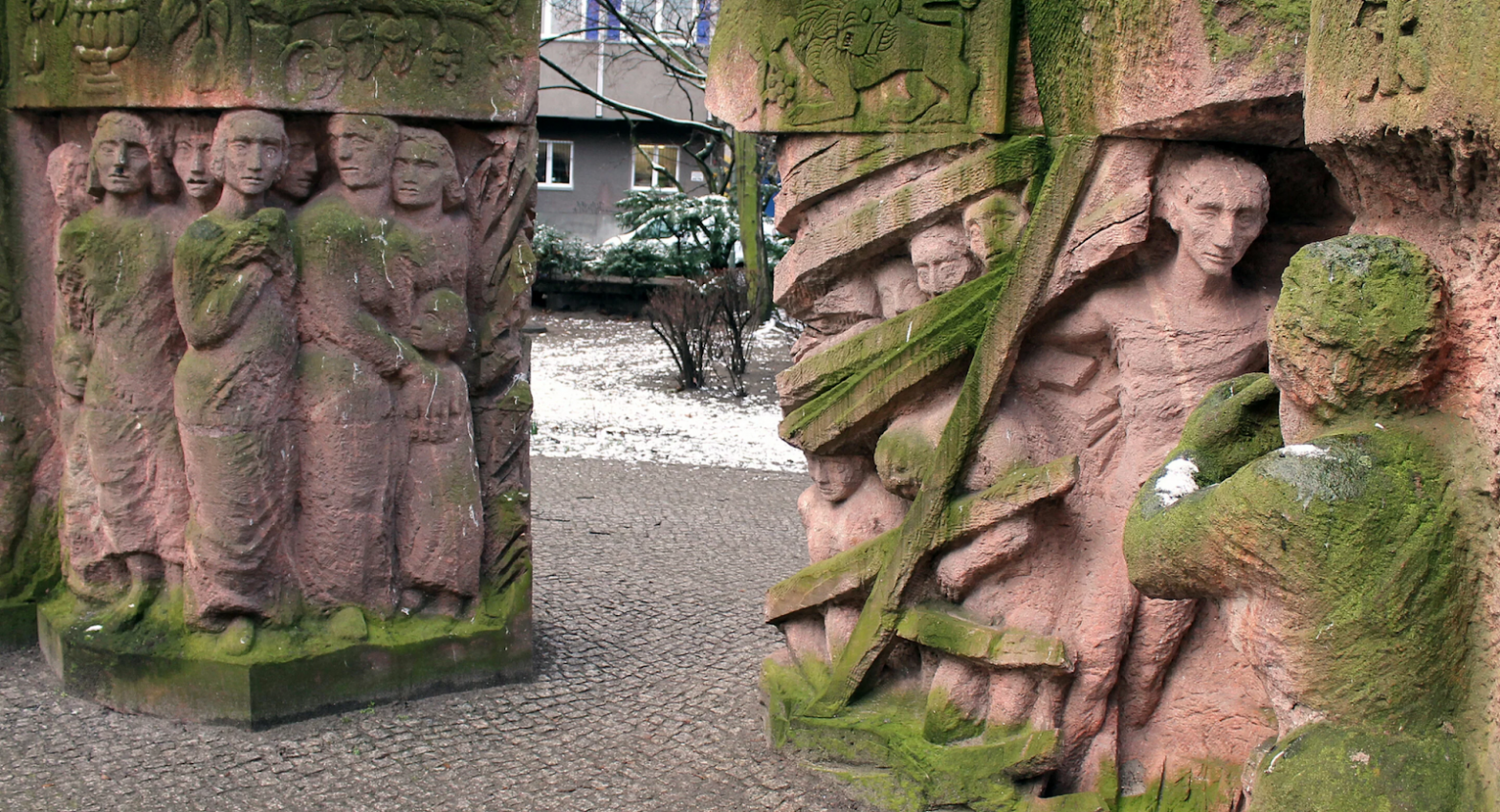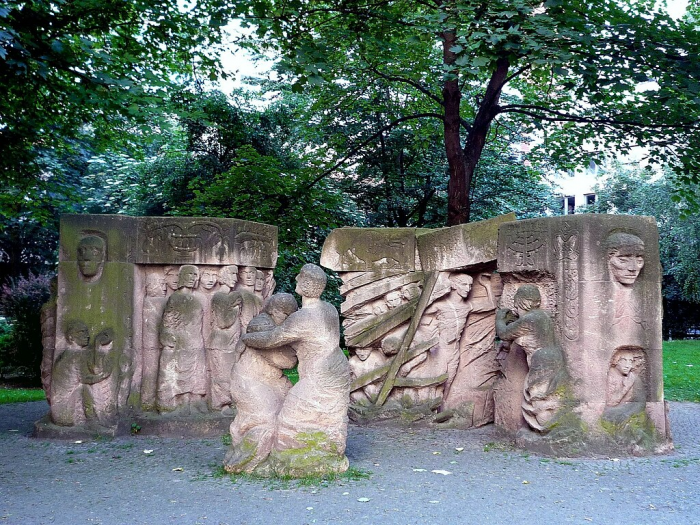For my memorial site, I have the privilege of researching, presenting, and eventually visiting the Block der Frauen, or Block of Women, a memorial to the Rosenstraße protest that occurred in Berlin between February 27th and March 6th in 1943. This memorial interested me as it is very visually interesting, and I felt that my education in the art history department could be useful, as well as because it is a bit different from many of the other sites we will be visiting, as it commemorates the actions of non-Jewish Germans.
The Rosenstraße protest is a well-known part of World War II history, as it was the only mass demonstration by non-Jewish Germans against the Nazis’ deportation of Jews. The protest began on February 27th, 1943, when approximately 1800 Jewish and Mischlinge (of mixed background) men were detained and brought to the former Jewish Welfare Administration on Rosenstraße. The Jewish men were husbands of “mixed-marriages”, that is, marriages between a Jewish and a non-Jewish person. Up until this point, Jewish and Mischlinge partners in mixed-marriages had been mostly protected from persecution due to their non-Jewish partners.
There was a lot of pressure in Nazi Germany for non-Jewish partners in mixed marriages to divorce their Jewish partners, and many mixed couples did indeed separate, resulting in social gain for the non-Jewish partner and heavily increased persecution for the Jewish partner. It was more common for non-Jewish men to divorce their Jewish wives rather than the other way around, meaning that by the time of the Rosenstraße protests, the majority of non-Jewish partners in mixed marriages were women. The Nazi government issued propaganda in many forms to encourage these women to divorce their husbands, but it could be a difficult case to make. Much of the Nazi’s propaganda about Jewish people (particularly Jewish men) relied on dehumanizing them and making them out to be cruel, conniving, and dangerous, all traits that these women knew did not apply to the men they loved.
The wives and other family members of these Jewish men were outraged at the detainment of their loved ones and lined up along Rosenstraße to demand their release. They were provided with very little information about what the Nazis planned on doing with their family members, and they wanted to know what was going to happen and where they might be taken. Throughout the eight-day protest, the women yelled at the armed SS soldiers, “Give us our husbands back!”, and told the soldiers that they would not leave until their family members were released.
There were higher-ups in the Nazi party who were in favour of shooting the women and making an example out of them, but the propaganda minister, Joseph Goebbels, knew that the massacre would be impossible to cover up and would show the allies that the German people were not as united as they wanted them to think. He ordered the release of the Jewish men on March 6th, 1943, in order to avoid further protests and division between the Nazi party and the German people.
In 1995, a memorial sculpture was erected in Berlin to commemorate the bravery of the women of the Rosenstraße protest. It is located off of Rosenstraße in central Berlin, in a memorial park for the protest. The park was built over what was once the Old Synagogue, which was destroyed during the war.
The sculpture is made out of sandstone blocks and depicts female and male figures trapped within the blocks, as well as figures free from the blocks and embracing. The blocks feature Jewish iconography, including the Star of David and a menorah. The blocks are large, with gaps in between them, allowing visitors to walk amongst the blocks and view the sculpture from many different angles. I don’t think that photos can truly do justice to the complexity and visual density of this sculpture, and so I am excited to see it in person and be able to truly take it all in.
The sculpture was designed by an artist named Ingeborn Hunzinger, who was born in Berlin in 1915, to a Jewish mother. As a person with mixed-Jewish ancestry, she was prevented from continuing her education in 1939 and left Germany for Italy, However, in 1942, she returned to the Black Forest where she was prevented from marrying her husband due to her Jewish ancestry. She returned to Berlin in the 1950s to continue her work as an artist.

Hunzinger’s background makes the Rosenstraße memorial all the more meaningful. While she was not directly involved in the Rosenstraße protest, she experienced what it was like to be a person of mixed ancestry under the Nazi regime, and her life was largely impacted by the persecution she faced. Many of the sculptures she created over the years were inspired and influenced by her experiences under National Socialism.
The Rosenstraße memorial sculpture is a unique piece of artwork for a unique event in the Holocaust. Many people who study World War II and the Holocaust wonder how things could have played out differently if more non-Jewish Germans had stood up to the Nazi regime as the women on Rosenstraße did. I think that the Rosenstraße protest shows the importance of connecting with the people in your own community. The wives and family members of Jewish men were not susceptible to antisemitic propaganda because they were involved in the Jewish community and could recognize the lies spread by the Nazi party. Other Germans, who did not know their Jewish neighbours, were more susceptible because Jewish people existed outside of their daily lives and so they were more likely to believe false and harmful rhetorics. By learning about marginalized groups in our own communities and forming friendships with them, we become less likely to believe dangerous stereotypes and propaganda that could serve to harm their communities.

